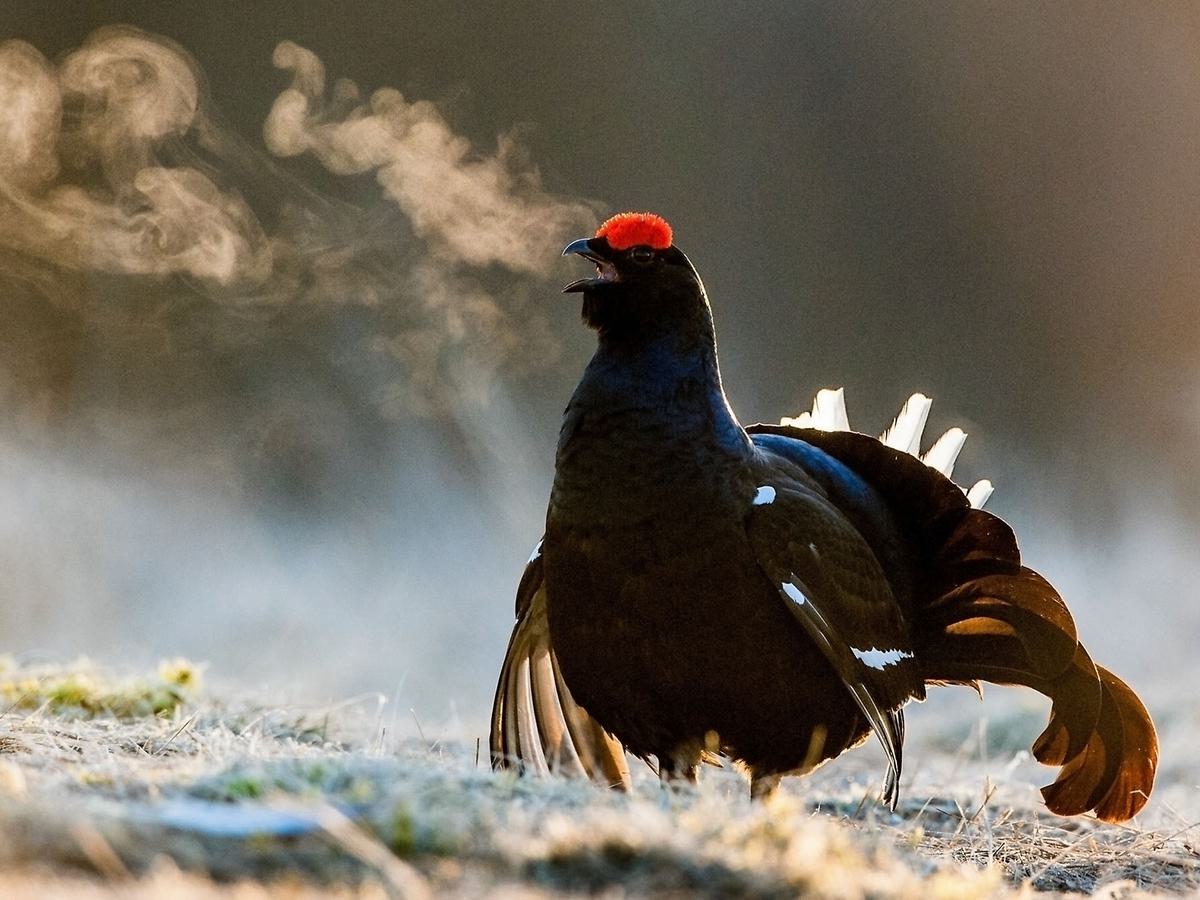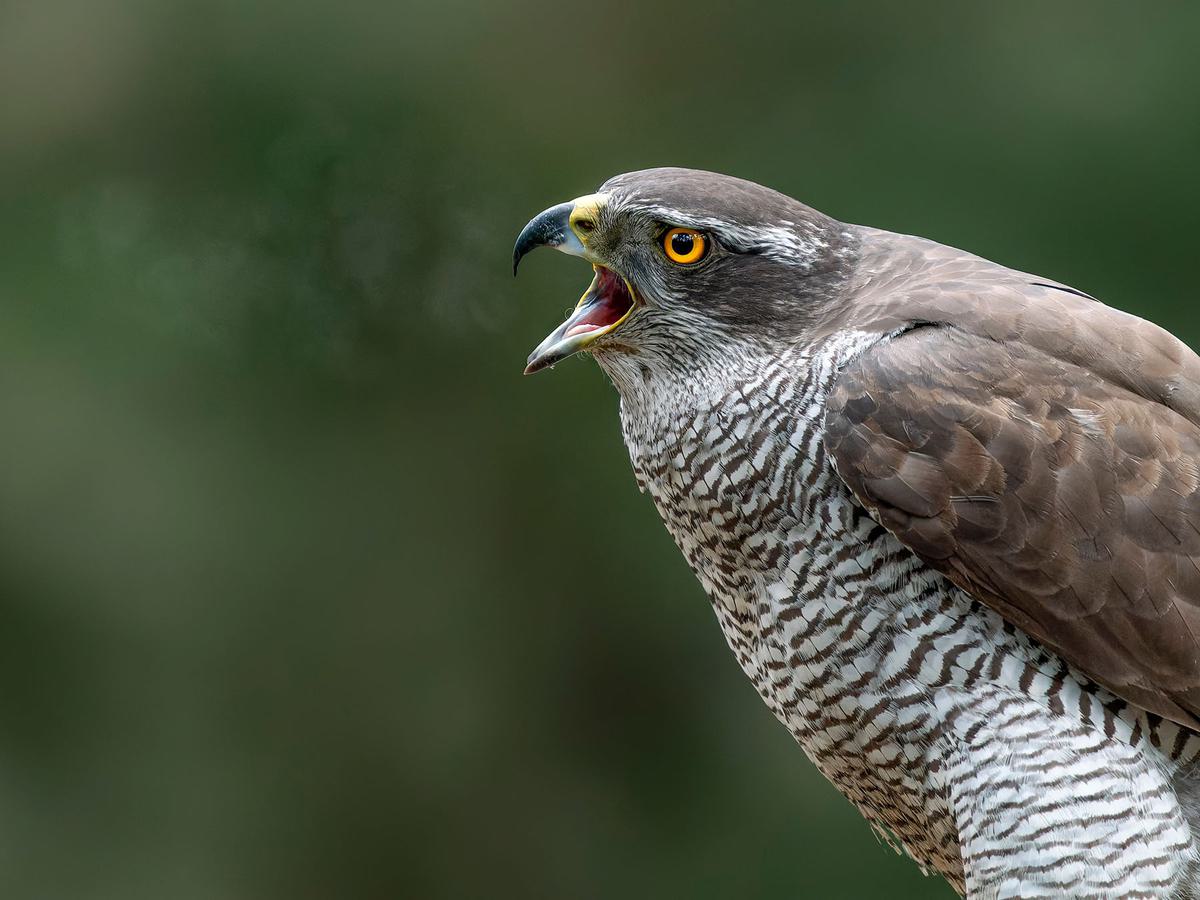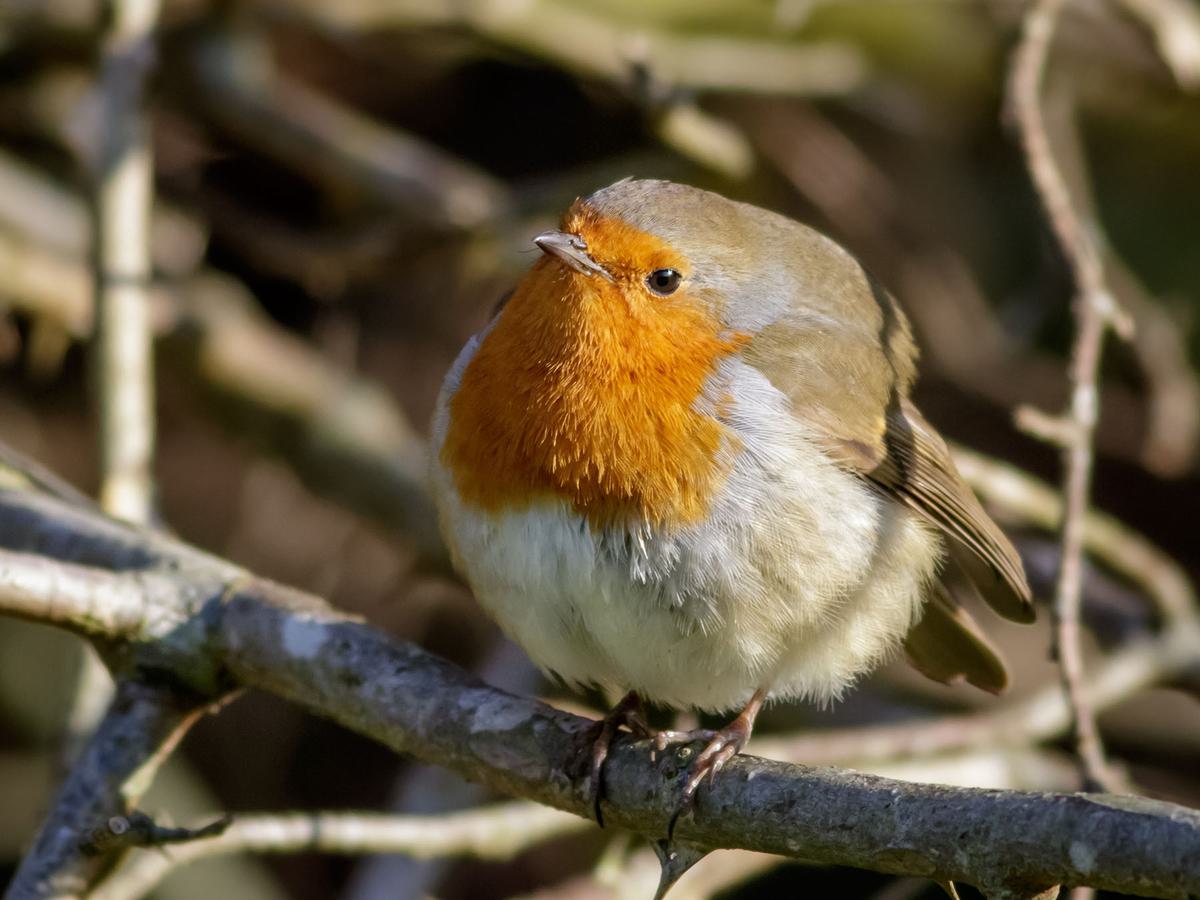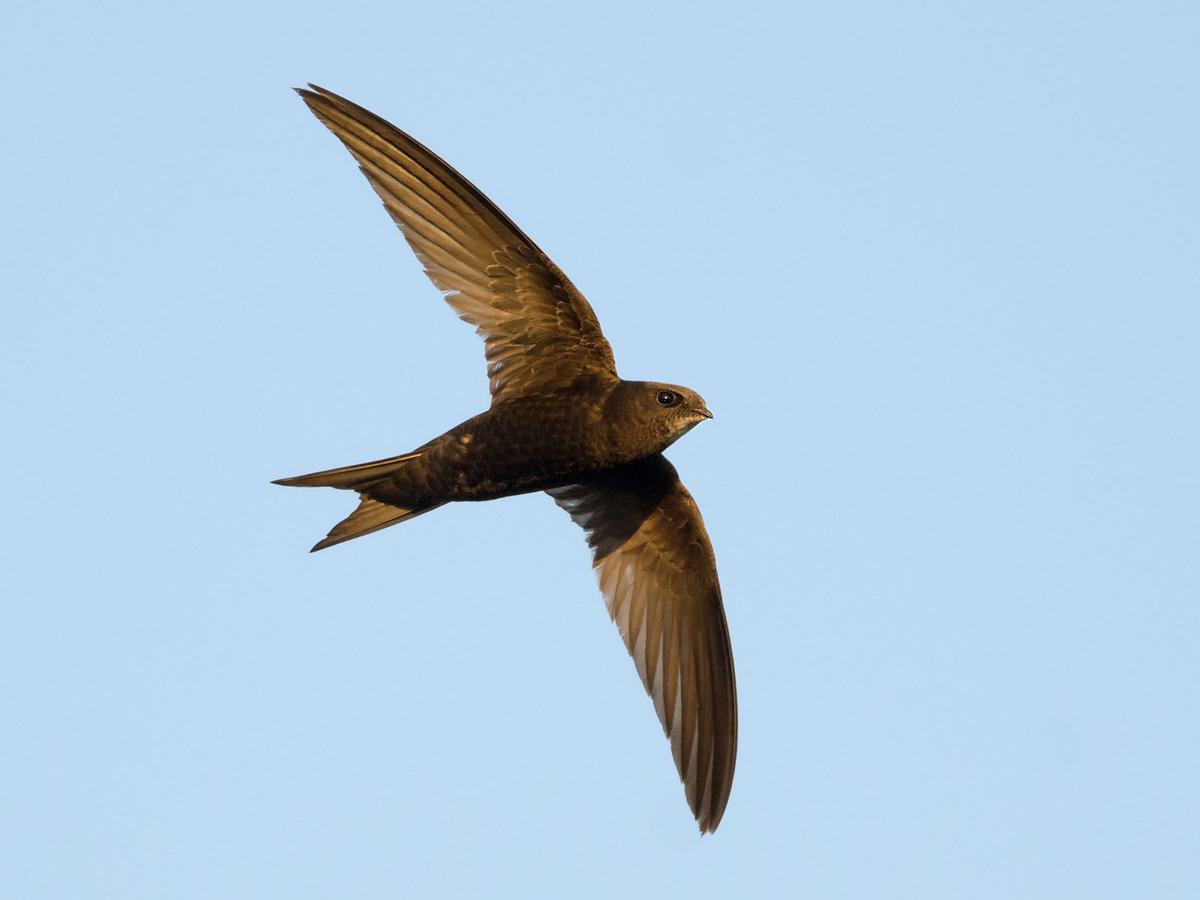Respiratory System

Maintaining a high metabolic rate and body temperature places an extreme demand on a bird’s respiratory system, especially during the intense physical exertion required for flight. Rapid oxygen delivery, carbon dioxide removal, and heat radiation are required if birds are to survive the rigors of everyday life. These challenges were the driving force behind the evolution of a remarkable respiratory system.
Unlike our relatively inefficient system of breathing in and out, birds maintain a constant flow of air through their lungs using a double inhale/exhale cycle and a network of air sacs within the chest and abdomen. For each pocket of air that passes through a bird’s lungs, it must inhale twice. Another key difference is that air enters the avian lung after an exhalation rather than an inhalation.
Understanding the avian respiratory system unlocks the secrets of their unique physical abilities and is vital for managing the health of domestic poultry, pets, and other captive birds. In this introductory guide, we outline the form and function of the avian respiratory system, a fascinating and complex facet of bird physiology.
Overview of the Avian Respiratory System
The avian respiratory system includes several components that transport and hold air during respiration. Continue reading for a basic description of the major regions and organs of this efficient system.
Unique Structures
Before reaching a bird’s lungs, air travels through the nares or oral cavity. Like us, birds can breathe in and out through either the nostrils or mouth. Next, air passes through the larynx/glottis, which prevents food from entering the respiratory system.
The air now enters the trachea, a cartilage-reinforced ‘windpipe’ that transports air from the head to the respiratory system. The trachea splits into two smaller pipes called bronchi, which enter the small, rigid lungs.
Birds have 7-11 (usually 9) air sacs, some of which hold air before oxygen exchange, and others hold air that has left the lungs. Before oxygen is absorbed in the lungs, air flows into posterior air sacs, which collect air as it is pumped through the system.
Next, air enters the parabronchi, the tubes within the lungs where oxygen exchange occurs. Air leaves the lungs and travels into anterior air sacs before being expelled from the respiratory system. The syrinx is the avian ‘voicebox’ located within the interclavicular air sac. Air flowing over this organ causes vibrations that create bird songs and calls.
Flow-Through Ventilation
Unlike mammals, birds breathe through continuous one-directional flow of air through the respiratory system. We take air in and breathe it out, sort of like the tide moves in and out of a bay. As a result, our breathing system is said to be tidal. Avians have a non-tidal respiratory system, with air flowing more like a running stream.
The constant airflow within the avian respiratory system is far more efficient than our back-and-forth breathing because it allows birds to process all of the air that enters the trachea rather than mixing fresh with stale air in the lungs.

Simple diagram of a Birds Respiratory System
Detailed look at the Respiratory System of Birds
Lung Design and Gas Exchange
Lung Anatomy
Birds have relatively small, compact, and rigid lungs that attach to the vertebra and ribcage. They change volume by less than two percent since air is pumped via air sacs and flows through the parabronchi in a single direction. Despite being much smaller than mammalian lungs, bird lungs have a significantly larger surface area for gas exchange.
Gas Exchange Mechanics
The primary role of respiration is to absorb oxygen and discard waste carbon dioxide. This exchange occurs through the process of diffusion.
Atmospheric air in the air capillaries of the avian parabronchi has a higher oxygen concentration than the blood, causing oxygen to diffuse through an extremely thin epithelial layer and into the bloodstream. Meanwhile, carbon dioxide diffuses out of the blood and into the air for exhalation.

Golden Eagle coming in to land
The Air Sac System
The Function of Air Sacs
Birds have rigid lungs, unlike our lungs which expand and contract to suck air in and push air out of the body. Ventilation through the avian lungs is powered by a system of air sacs that distend and compress to maintain a constant flow of air through the lungs and contribute to cooling the body.
While bird lungs may be smaller than mammals’, the addition of air sacs means they hold significantly more air in their respiratory system.
Distribution and Coordination
Most birds have nine thin-walled expandable air sacs, which take up a significant proportion of the avian chest and abdomen. The air sacs are also connected to pneumatic (air-filled) bones, although the number of these hollow bones and the volume of air they hold varies between species.
These air sacs can be divided into two groups based on their position in the body. The anterior air sacs are located toward the front of the body, while the posterior group is situated behind the lungs.
The Anterior Group
- A single interclavicular air sac
- Paired cervical air sacs
- Paired anterior thoracic air sacs
The Posterior Group
- Paired posterior thoracic air sacs
- Paired abdominal air sacs
Birds control the airflow through these sacs by muscular contractions that shift the position of their ribs and sternum (breastbone). A forward movement of the sternum sucks air into the posterior air sacs. A separate muscular contraction lifts the breastbone, increasing pressure within the air sacs and pushing it into the lungs.

Male Greater-sage grouse during the breeding season, with his gular sacs on show
Breathing Coordination During Flight
Synchronization with Wing Beats
Research has shown that at least some birds coordinate respiration with flight to maximize efficiency during this intense physical activity. The downstroke of a flying Pigeon or Magpie creates compression which coincides with exhalation, while the upstroke creates expansion and resulting inhalation.
However, the ratio of wingbeats to breaths is not necessarily equal. Some birds flap their wings several times for each breath, while others achieve a one-to-one ratio. These values can also vary within the same species depending on their flight speed.
Oxygen Demand and Delivery
During flight, the avian metabolic rate climbs steeply, greatly increasing the oxygen demand. So, how do birds absorb enough oxygen to power such intense physical activity?
A study on Rock Pigeons demonstrated that they use roughly 17 times more oxygen during flapping flight than a bird at rest! The bird does this by increasing the volume of blood pumped by its heart over seven times and more than doubling its oxygen uptake rate.
Adaptations in the Respiratory System
High-Altitude Breathing
Most birds spend their lives within the canopy or pretty close to the ground. However, some high-flying birds routinely migrate at altitudes of several thousand feet, and the Rüppel’s Vulture has even been recorded at well over 30,000 feet above sea level!
Flying at such heights puts birds at high risk of oxygen deprivation or hypoxia. However, their efficient respiratory system can extract enough oxygen to maintain consciousness.
Some species have other specializations that help them cope with thin air. Bar-headed Geese, (which famously migrate over the Himalayas) have hemoglobin in their blood with a higher affinity for oxygen absorption than other birds.
Diving Birds
Many birds dive below the surface to catch fish, search for aquatic invertebrates, or graze on aquatic plants. Some diving birds slow their heart rate to conserve oxygen, while others rely on a large volume of air in the respiratory system to supply their oxygen needs.
Emperor Penguins can dive to over 1000 feet and remain submerged for over fifteen minutes, which requires some pretty advanced breath-holding skills!
These birds store excess oxygen in their respiratory system, blood, and muscles and reduce their heart rate dramatically, slowing their metabolism and allowing their body temperature to drop by over ten degrees Celsius.

Emperor Penguins can hold their breath for over 15 minutes at over 1,000 feet, which requires some pretty advanced breath-holding skills
Health and Disease
Common Respiratory Ailments
Birds are susceptible to various respiratory illnesses. Well-known examples include:
Bacterial infections
- Mycoplasma
- Chlamydophila psittaci
Fungal infections
- Apergillosus
Viral infections
- Newcastle disease
- Avian influenza
Impact of Environmental Factors
Sadly, the advanced and highly efficient avian respiratory system is not immune to the effects of air pollution but rather makes them even more sensitive to toxic chemicals.
Pollutants like nitrogen dioxide, sulfur dioxide, and benzene can cause significant respiratory distress and illness and ultimately reduce bird breeding success and population sizes, particularly in industrial and urban areas.
Summary
The efficient avian respiratory system is key to the incredible athletic abilities of birds all over the world.
Whether diving hundreds of feet below the surface of an Antarctic Ocean or flying wing to wing with a cruising airplane, their complex system of air sacs and double breathing cycle is an advanced evolutionary design that supplies the oxygen needed for extreme metabolic demands.
Unfortunately, this same sensitive respiratory system is particularly vulnerable to pollutants in our air, which is just one of many reasons to support habitat protection and other conservation efforts that benefit wild birds.



